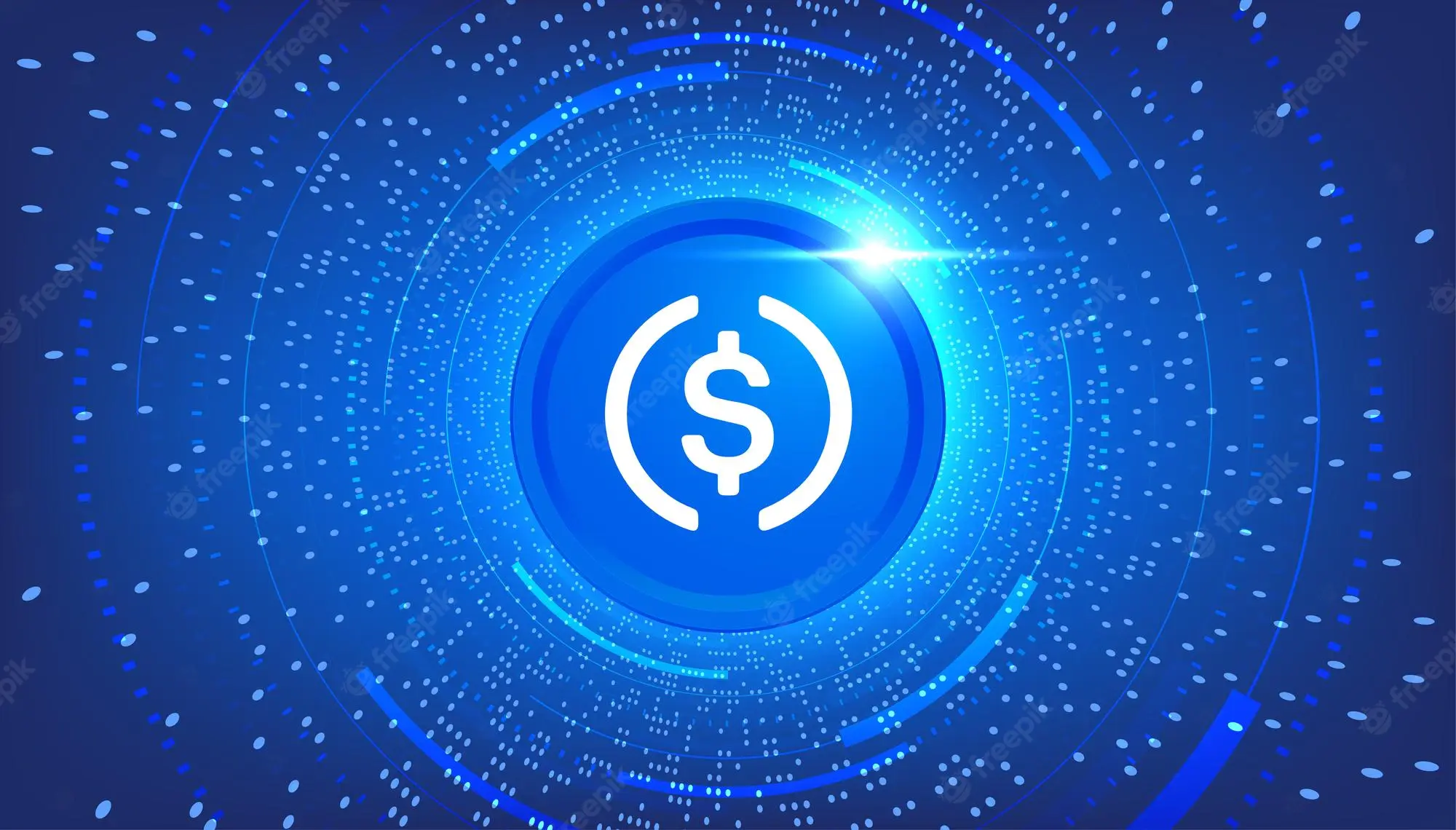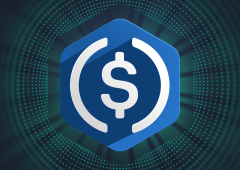USDC Trading Volume Surges in July Amid New EU Regulations
01.08.2024 8:00 2 min. read Alexander Stefanov
Circle's USD Coin (USDC) experienced a significant boost in trading volume and market capitalization in July, largely influenced by new European digital asset regulations.
A report from CCData on July 31 revealed that USDC trading on centralized exchanges hit $135 billion by July 25, with its market cap increasing by 5.4% to $33.6 billion. This growth coincides with Circle becoming the first stablecoin issuer approved under the European Union’s new Markets in Crypto-Assets (MiCA) framework as of July 1.
In comparison, Tether (USDT) continued to grow, albeit at a slower pace, reaching a market cap of $114 billion with a 1.6% rise in July. Despite the slower growth, USDT maintains the largest share of the stablecoin market at nearly 70%, and Tether reported a record $5.2 billion profit for the first half of 2024.
Overall, the stablecoin market saw a 2.1% increase in capitalization, reaching $164 billion, the highest since April 2022. However, trading volume on centralized exchanges dropped by 8.4% to $795 billion by July 25, marking a fourth month of decline.
Ahead of the new EU rules, several European exchanges delisted stablecoins. The regulations require issuers to be EU-based, notify authorities, and submit an approved white paper. Larger stablecoins face additional restrictions, including transaction caps and holding 60% of reserves in various banks. Tether CEO Paolo Ardoino highlighted the difficulty in finding European banks willing to handle stablecoin business.
-
1
Ethereum Overtakes Bitcoin in Retail FOMO as Traders Shift Focus to Altcoins
17.07.2025 8:05 2 min. read -
2
Fartcoin Price Prediction: FARTCOIN Could Rise to $2.74 After Major Breakout
17.07.2025 16:01 3 min. read -
3
Binance to Launch 2 New Contracts with 50x Leverage: Everything You Need to Know
10.07.2025 12:00 2 min. read -
4
Standard Chartered Becomes First Global Bank to Launch Bitcoin and Ethereum Spot Trading
15.07.2025 11:00 1 min. read -
5
ProShares Ultra XRP ETF Gets Green Light from NYSE Arca
15.07.2025 19:00 2 min. read
XRP Eyes Next Target as Bullish Crossover Sparks 560% Surge
XRP is back in the spotlight after crypto analyst EGRAG CRYPTO highlighted a powerful historical pattern on the weekly timeframe—the bullish crossover of the 21 EMA and 55 SMA.
Top 5 Most Trending Cryptocurrencies Today: Zora, Pudgy Penguins, SUI and More
Crypto markets are buzzing with momentum as several altcoins post double-digit gains and surging volumes.
Sui Price Jumps 14% to $4.26 amid ETF Hopes
Sui (SUI) surged 14% in the past 24 hours, reaching $4.26 as bullish technical patterns, Bitcoin’s rebound, and renewed ETF speculation pushed the altcoin higher.
HBAR Mirrors 2021 Cycle as Key Breakout Test Approaches
Hedera Hashgraph (HBAR) is closely tracking its 2021 price behavior, according to crypto analyst Rekt Capital.
-
1
Ethereum Overtakes Bitcoin in Retail FOMO as Traders Shift Focus to Altcoins
17.07.2025 8:05 2 min. read -
2
Fartcoin Price Prediction: FARTCOIN Could Rise to $2.74 After Major Breakout
17.07.2025 16:01 3 min. read -
3
Binance to Launch 2 New Contracts with 50x Leverage: Everything You Need to Know
10.07.2025 12:00 2 min. read -
4
Standard Chartered Becomes First Global Bank to Launch Bitcoin and Ethereum Spot Trading
15.07.2025 11:00 1 min. read -
5
ProShares Ultra XRP ETF Gets Green Light from NYSE Arca
15.07.2025 19:00 2 min. read


